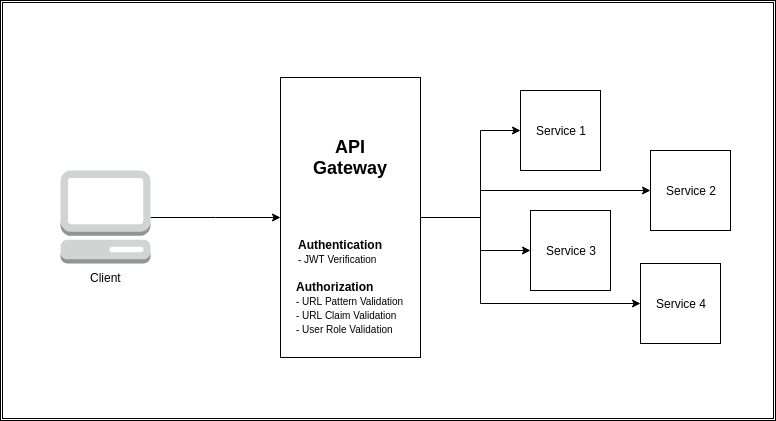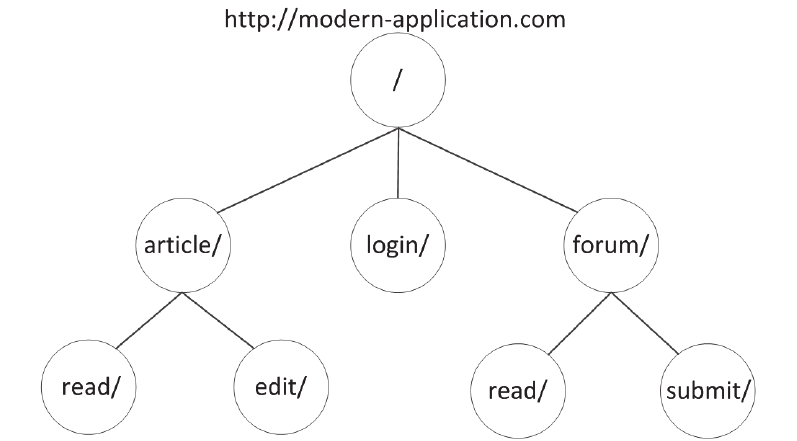Centralized Authentication and Authorization API Gateway

Centralized Auth Gateway
A centralized authentication and authorization gateway which is built on top of Netflix Zuul.
The implementation chains a Custom Authentication Filter and a Custom Authorization Filter both of which precede the Pre Decoration Filter of Netflix Zuul to perform their respective functions before a request is reverse proxied onto the downstream service.
Custom Authentication Filter
The Authentication filter is the first filter that runs in the filter chain. As the name suggests it provides an authentication layer by validating the Access Token of the request.
The Filter performs the following actions :
– Extracts the token from the request
– Decodes the JWT
– Verifies the signature, issuer and expiry
– Sets the userRole, userId and userType claims in the Request Context
– Sets the isAuthorizationRequired Flag to true if all the above tasks succeed, else throws an exception indicating what caused the request to fail.
Custom Authorization Filter

The Authorization filter is the second filter that runs in the filter chain. As the name suggests it provides an authorization layer by validating the claims set by the Authentication Filter into the request context.
The properties are configured in a property file called authorization.yml which captures the user defined validations to be processed and in order to perform these validations in an optimized way, it creates a URL Pattern Tree which is basically a tree made up of nodes that represent the path/patterns of the url at different levels. Every terminal node that represents a url pattern is designated as a url node which has additional attributes to perform validations.
It performs 2 mandatory validations and one optional validation :
1. Validating the URL Pattern
2. Validating the URL Claim
3. Validating the User Role (Optional)
Validating the URL Pattern
The URL Pattern Tree formed above is used to validate if a request matches any valid url pattern. If the tree contains a url pattern node that matches the request it returns a valid response and performs the url claim validation, else it throws an exception indicating an Invalid Route.
Validating the URL Claim
The URL Pattern once validated then is checked for claims in the pattern, the user can denote one of the path parameters in the request to match one of the jwt claims. This is achieved by finding out the part of the url that is designated as a claim (identified by the string :claim_name) and then substituting it with the claim value and checking for equality with the path in the request. If the url claim is found to be valid the request is allowed to proceed further, else an exception is thrown that specifies that the url claim was invalid.
Validating the User Role (Optional)
This is an optional validation and is performed after the url claim validation, here the user can designate if the url pattern can only be requested by certain role/roles. If so, we validate the userRole claim against the list of claims/claim denoted by the user for the specific url pattern. If found to be valid the request is allowed to proceed further, else an exception is thrown that specifies that the userRole was not allowed.
If all the above validations succeed the request is allowed to proceed further in the filter chain and is reverse proxied to the designated zuul route that matches the request.
To know more about the project head over here to check out the implementation.
Playing Around with the Gateway
- Clone the git repo from here.
- Build the project using Maven.
- Start the Spring Boot Application.
To Play around with the gateway one can make use of the inbuilt endpoint to generate a token by providing a userRole, userId and a userType and generate an access token for the subsequent requests. You can use the following command to do the same :
curl -X POST \ http://localhost:8082/token/generate \ -H ‘Content-Type: application/json’ \ -d ‘{ “userId”:1, “userType”:”regular”, “userRole”:”regular” }’
You can then use this token as shown below in the subsequent requests :
curl -X GET \
http://localhost:8082/test/endpoint/v0/test/1/ping \
-H ‘Authorization: Bearer <ACCESS_TOKEN_HERE>’
You can validate the following scenarios:
1. Validity of the Token Signature
2. Expiry of a Token
3. Validity of the URL Pattern
4. Validity of the URL Claim
5. Validity of the User Role
